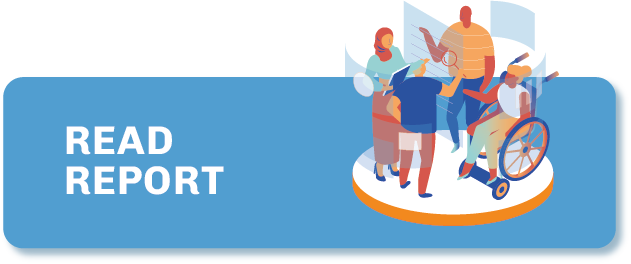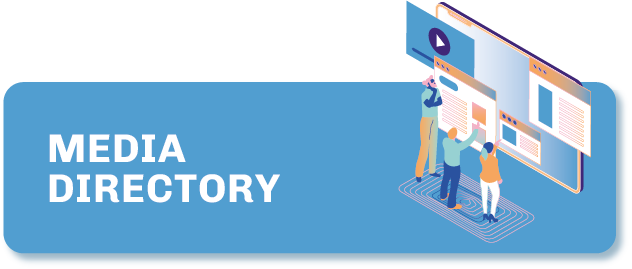Lithuania
Lithuania’s digital independent news media scene consists of many small but growing outlets offering journalism in at least four languages. The strength of this vivid market is in its variety, even if the impact of the players on society is less significant.
GENERAL INFORMATION
Press
freedom
ranking
Internet
penetration
POPULATION
Media organisations
in the Directory
TYPE OF COVERAGE

TYPE OF ORGANISATION

GENDER OF FOUNDERS

Press freedom
Verbal attacks on journalists during the 2021 August protests against Covid-19 restrictions came as a shock to a country where journalists are generally not confronted with dangers to their physical security. “Although relations between the government and journalists have been marked by tensions that increase with every new crisis, political attacks against journalists have recently been rare,” says Reporters Without Borders in its Press Freedom Index. However, journalists are “relatively often confronted with refusals to provide public information without explanation”, it adds. “Although there are no systematic attempts to censor quality journalism, journalists struggle with self-censorship while reporting on certain historical and gender issues.”
Market structure and dominance
In Lithuania, the media landscape is dominated by the public broadcaster (LRT), the TV3 Group (which comprises of nine TV channels, three radio stations and many smaller media ventures), and the LNK Group, with five TV channels, according to Reporters Without Borders.
“The multitude of online media, some of which focus on investigative journalism, benefit increasingly from the attention of younger audiences,” it notes.
How media is funded
The major source of revenue for the media in Lithuania is advertising.
The ownership of the news media market is, however, in the hands of the major corporate players and ownership is highly concentrated, according to the Centre for Media Pluralism and Media Freedom’s Monitoring Media Pluralism in the Digital Era (MPM 2020) country report on Lithuania.
The country’s national media sector is relatively free from political influence, but such influence is possible “through the funding of political advertising and publicity services”, notes a later Monitoring Media Pluralism in the Digital Era (MPM 2022) report. The report assesses editorial autonomy as being at a high risk level, citing registered cases of political influence, which are “correlated with loopholes in media ownership transparency”.
According to the same report, the Lithuanian state provides some support to local/regional and community media through subsidies “granted on a competitive basis” by the Media Support Foundation, but notes that this support “remains inadequate to guarantee media autonomy and sustainability over a longer period”. This foundation is currently undergoing reorganisation, it adds.
Reporters Without Borders similarly notes how a “systematic lack of funding” has “crippled” local journalism, amid the recovery from the pandemic.
Fifteen profiles of digital native media organisations from Lithuania are included in the directory. Ten of these outlets produce content exclusively in the Lithuanian language, one is dedicated to English speakers and three are multilingual, serving Lithuanian, Russian and English-speaking audiences. One outlet is uniquely focused on serving ethnic minorities in the Baltic region and offers news in Russian and Polish.
The Lithuanian digital news media market is presently dominated by big media businesses. However, independent news media outlets are growing quickly in popularity and can sustain themselves through the financial support of their readership.
The variety of topics and specialisations of independent media outlets in Lithuania is high. The most popular digital native Lithuanian-language media publication, which also has the biggest team, is a sports news website focusing solely on basketball. Two independent regional news websites operate in Lithuania’s biggest regional centres Kaunas and Klaipėda. There is a start-up news project focusing on LGBTIQA+ topics. There are two news sites covering the contemporary art scene, one serving a Lithuanian audience and one encompassing all three Baltic countries. There is a news website promoting a Christian worldview, another managed by the progressive student’s union, and another that was born out of a protest against service industry workers’ oppression, called Life is too Expensive.
In Lithuania, there is a lack of independent digital native news media outlets offering general news nationally, and projects that seem to have such aspirations tend to struggle financially.
The biggest strength of the Lithuanian digital independent media market is the variety of specialisations on offer. The clearer the specialisation (territorial, thematic or genre) of the news media outlet, the better it does financially, both in terms of attracting institutional or private financial support, be it subscription income, donations or audience support.
Last updated: January 2023
CREDIT FOR STATISTICS: Press Freedom statistics, RSF Press Freedom Index 2022; Internet penetration and population statistics, from Internet World Stats

